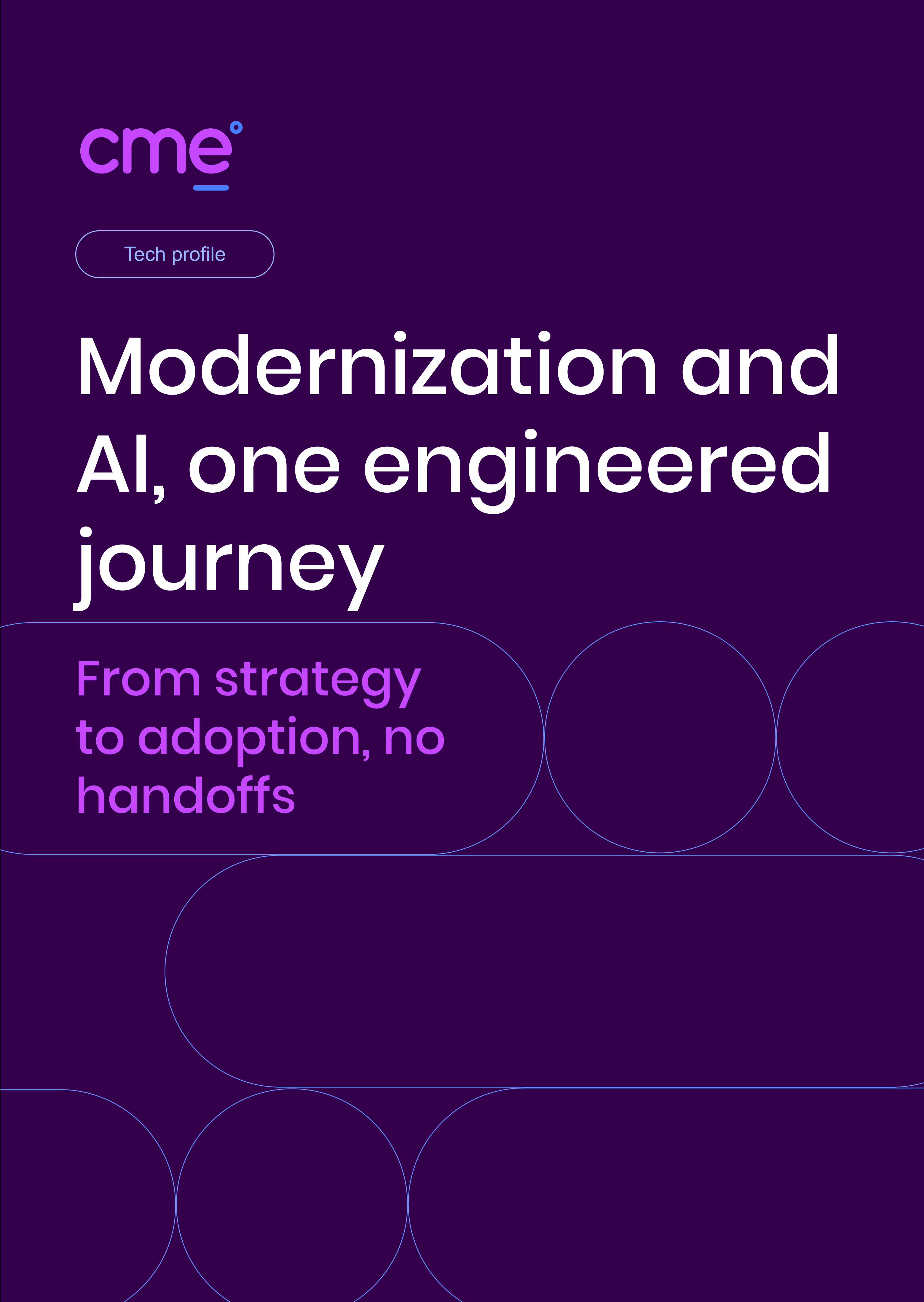Software Contract in the AI Era: Why Time & Materials Put Clients Ahead
AI
Software Contract in the AI Era: Why Time & Materials Put Clients Ahead
Fixed-cost contracts protected both clients and vendors. In the AI era, the economic advantage tilts heavily towards vendors. Time & materials is the model that may restore balance.
For years, fixed-cost contracts were considered the default model in software development. Clients favored this approach because it seemed to offer certainty: a clear budget, a defined scope, and no surprises. Vendors, on the other hand, took on the execution risk and priced projects to account for unforeseen complexity.
However, that two-sided dynamic is starting to break down. And that’s due to the impact AI-powered tools are having on the development landscape.
How AI is rewiring software delivery
AI tools are no longer experimental. They’re accelerating engineering at scale:
- GitHub Copilot: Routine coding completed 55% faster, with up to 40% of code auto-generated.
- OpenAI Codex / ChatGPT: Prototyping, testing, and debugging tasks that took half a day now finish in under an hour.
- Automated QA (e.g., Testim, Mabl): Cuts testing and maintenance time by up to 70%, speeding release cycles.
Together, these improvements mean a project that once required 10 engineers for three months can now be delivered by 7 in half the time, a step function shift in productivity.
Why fixed cost is no longer client-friendly
Locking in a fixed cost gave clients confidence that they wouldn’t face runaway budgets. In the pre-AI era, clients saw this as protection against scope creep and inefficiency.
But today, with AI’s vast productivity advantages, vendors can deliver the same scope with fewer hours and lower costs, yet clients still pays the original price.
The result:
- Productivity gains stay with the vendor.
- The customer misses out on the real economic upside of AI-driven productivity.
- The contract creates a widening gap between price paid and value received, leading to an unbalanced vendor-client relationship.
Time & materials – A better fit for the AI age
A time and materials (T&M) model, combined with AI-augmented engineers, offers clients a more transparent and mutually beneficial structure:
- Pay for actual work, not vendor margins
Clients see the real productivity gains reflected in reduced hours and lower resource requirements. - Access to AI-augmented talent
Instead of outsourcing risk entirely, clients can staff or augment teams with engineers who, thanks to AI tools, work at 1.5x–2x productivity levels. - Flexibility for iteration
AI accelerates delivery as well as iteration. With T&M, clients can adapt requirements on the fly without the rigidity of a fixed contract. - Shared incentives
Both vendor and client are aligned to maximize efficiency and output, rather than covering estimates to protect margins.
A new partnership model
Fixed-cost contracts will not disappear overnight. For clearly defined, low-complexity projects, they may still have a role to play. But for strategic builds in the AI era, the smarter model is defined by staffing and augmenting with AI-powered teams on a T&M basis, ensuring:
- Clients capture the economic benefits of AI efficiency.
- Vendors focus on delivering value and quality instead of managing risk buffers.
- Both sides adopt a partnership defined by transparency and adaptability, not fixed contracts.
The takeaway
The AI era is steadily shutting down traditional assumptions about cost, speed, and productivity in software development. Sticking to fixed-cost contracts means clients are leaving money on the table and effectively subsidizing vendor margins.
By moving toward T&M models with AI-augmented engineers, clients can finally align cost with value, seize AI’s productivity dividend, and build a more balanced relationship with their vendors.
More Insights

OUR TECH PROFILE
Here’s a look at how we approach modernization and AI, the capabilities we bring to every project, and proof of impact through client success across industries.




